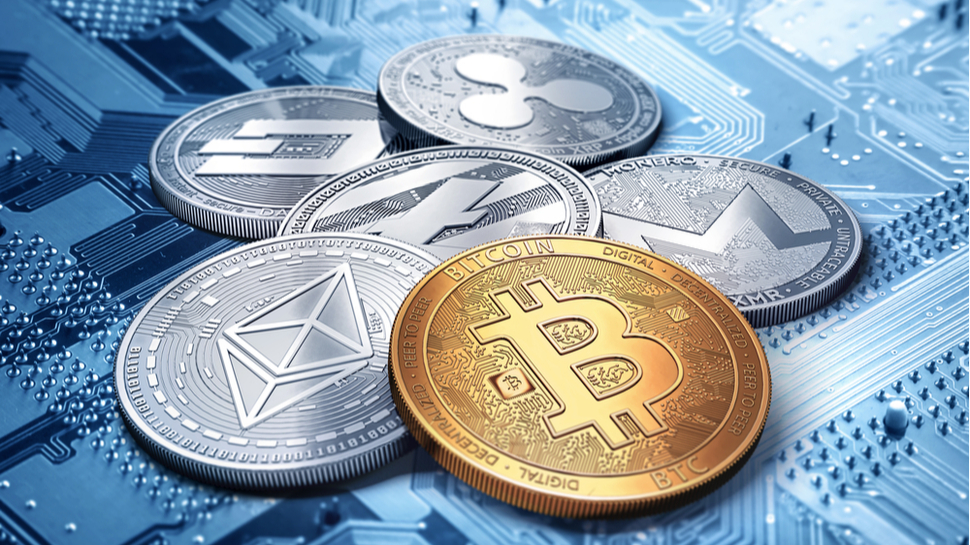The Matrix is one of the most iconic sci-fi movies of all time. This dystopian action film changed how we think about the future, technology, and the increasingly blurred lines between the real and virtual worlds.
In this blockbuster from 1999, intelligent machines have won the war against humans, who pay the ultimate price. Their bodies are enslaved for their energy while their minds are occupied within the Matrix, a simulated reality designed to make them believe everything is as it always was.
The Matrix raises a thought-provoking question: would you rather stay in the comfort of an artificial world or face the harsh truths of an unknown reality?
As a result of recent technological developments, this may be a question humanity is forced to answer sooner rather than later. Many experts have warned about the dangers posed by artificial intelligence, and the popularization of blockchain, NFTs and the metaverse add fuel to the debate. Will these technologies help us better our lives? Or are they guiding us towards a darker, more Matrix-esque world, wherein we spend more and more time in a virtual space we can’t escape?
Our evil overlords aren’t running the show just yet. However, our increased dependence on technology for working, living, and connecting with others does raise important questions about how much time is ‘too much’ to spend in a virtual world and what risks and dangers are associated with virtual reality and technology.
Looking through the lens of three of the most high-profile tech concepts in recent years - NFTs, blockchain, and the metaverse - here’s what we need to consider.
NFTs
Walking through any art gallery, you’ll see priceless works of art by famous painters throughout history. But could a digital file ever be thought of as a piece of artwork, equal in value to masterpieces by Cézanne or Van Gogh?
Enter the NFT, or non-fungible token. In simple terms, an NFT is an individual unit of data, recorded and stored on a digital ledger known as a blockchain. Non-fungible means the item is one-of-a-kind, unable to be copied or substituted — just like the Mona Lisa.
The NFT contains unique ownership data, so NFTs aren’t the artwork itself but rather a method used to record the ownership of digital art — otherwise, anyone can claim to own the original of a digital art file.
They first appeared in 2017 with the launch of CryptoPunks but didn’t take off until early last year. Now, NFTs have taken the art world by storm.
NFT technology allows artists and collectors to connect directly, but NFTs also give us a way to verify ownership of digital art, rare in-game items, virtual spaces, and domain names. In a virtual world, NFTs will become increasingly important. You’ll not only display your digital art within the metaverse, but NFTs will also represent ownership of digital items, such as the clothes and accessories worn by your avatar and the purchases you make within the digital world you spend time in.

Will digital art ever replace that priceless watercolor hanging on your wall? It’s doubtful, as physical arts such as paintings, sculptures, and photography will always hold value to collectors, whether it’s sentimental or monetary.
There is also a dark side to the world of NFTs, which is currently subject to no direct regulatory guidance, although it’s possible the US government could categorize NFTs as securities or commodities in the future. Like fine art, NFTs are only worth what people will pay for them and the level of volatility in the NFT (and cryptocurrency) space is extreme. No investment is ever a guaranteed success and the NFT field is purely speculative, so it’s easy to lose money with NFTs if you’re not careful.
Artists are also at risk of art theft, plagiarism, and fraud, with the virtual world giving users anonymity that unscrupulous art thieves can use to their advantage. NFTs also raise some concerning environmental issues, as the Ethereum blockchain on which most of them sit demands a huge amount of energy to sustain itself.
As with any unregulated space, there’s plenty that can go wrong, with concerns that the NFT market can be used as a type of pyramid scheme, which sees early investors making huge gains but newcomers struggling to recoup their losses.
The allure of digital art investing is appealing to many and can be a lucrative and fun way to support the creative arts, but as with any new investment, caveat emptor.
Blockchain
If you’ve ever dabbled in Bitcoin, you will have utilized blockchain technology - only probably without knowing it. A blockchain is a digital ledger of transactions that provides a high-level of security and transparency. While blockchain has many uses, it plays an essential role as the ledger behind most cryptocurrencies, including Bitcoin and Ether.
In the future, however, the role of blockchain is likely to expand, as it can also be used to verify digital identity, store and protect data, and allow for secure digital voting — all essential elements in keeping people safe in a digital world.
With companies increasingly accepting cryptocurrency as payment and El Salvador becoming the first country to make Bitcoin legal tender, more and more of us are investing in digital currencies and therefore becoming dependent on the security of blockchains to protect our finances.
But just like the Matrix itself, the long-term importance of cryptocurrency may turn out to be an illusion that we’ve bought into. As with NFTs, the crypto market is decentralized and speculative, and it’s also the largest unregulated market in the world. While investors have been lured in by the lucrative growth in Bitcoin, as well as the opportunity for disintermediation and higher levels of financial privacy it affords, cryptocurrencies aren’t backed by any government or bank or FDIC insurance, making them riskier than traditional currencies.

The lack of regulatory oversight and anonymity associated with crypto also makes it attractive to the nefarious characters of the digital world. It’s harder to track and trace so it appeals to criminals, with digital currencies used for ransomware attacks, money laundering, dark web transactions, terrorism, and illegal drugs on an international scale.
While a recent study estimated that only 3% of Bitcoin transactions involve illegal activity and authorities are becoming better at analyzing transactions on a blockchain, that’s not to say the technology isn't still problematic.
Many investors, especially younger ones new to the market, turned to crypto during the pandemic as a new hobby — it’s thought that 16% of American adults owned or invested in crypto in 2021. While it’s clear demand is higher than ever before, do we, as a society, want to be moving our investments and finances into an unregulated, digital world?
Increased governmental oversight is one way to manage the risks of crypto — the Federal Reserve and US banking regulatory bodies have officially added cryptocurrency to the agenda for 2022, with plans to discuss regulatory standards, crypto-backed loans, and liquidity requirements for banks. As crypto becomes more mainstream, some form of regulation seems inevitable, giving authorities more power to curb illegal activity.
But how can you effectively regulate a currency that’s completely decentralized and doesn’t fall under any particular jurisdiction? While governments around the world are working on it, there are more questions than answers at this point.
The metaverse
In The Matrix, Neo is offered a red pill or a blue pill. The blue will send him back to the familiar comfort of the Matrix, while the red will bring him into a harsh and uncertain reality. Today, this iconic set piece feels more relevant than ever, with the emergence of the concept of the metaverse.
The metaverse is imagined as a place where users connect online, in virtual spaces, with the help of virtual reality headsets and other technology. Represented by your avatar, you will be able to move through the metaverse just as you would in real-life. In the metaverse, you can attend virtual meetings, go to concerts, shop, and attend conferences, all from the comfort of your home. And yes, you’ll be able to display your NFT purchases within the metaverse — that you purchased with blockchain-based cryptocurrencies.
It’ll be an important part of Web 3.0, the latest imagining of the internet as a decentralized space where users have more autonomy, control, and connection opportunities without a central authority.
When Facebook CEO Mark Zuckerburg announced in October that the company was changing its holding company name from Facebook to Meta, signaling an increased focus on the metaverse, millions wondered what that meant for the future and how intertwined our lives might become with virtual reality. But it’s not just a Zuckerberg pipedream; scores of corporate giants have already invested serious resources into the metaverse.
Tech heavyweights like Sony and Microsoft see huge value in a fully-realized metaverse, but even retail companies like Chipotle and Nike are ready to sell their virtual products in this new virtual world, and investment funds are springing up to help investors get a piece of the pie.

It might sound appealing, but the metaverse is also fraught with potential issues, including identity theft, fraud, and security concerns — all legal landmines yet to be sorted out.
Living our lives in a virtual reality world would bring other risks too. We already know how addictive screen time can be, especially for developing minds, so how much worse would an immersive 3D online world be for internet addiction, compared to Facebook and the social media platforms we already use?
Spending more and more hours online can contribute to many serious issues, including a sedentary lifestyle, high blood pressure, depression, withdrawal from society, and confusion as to what’s real and what isn’t. If our children come of age in a predominantly virtual world, what does that mean for their future and wellbeing?
So, would you prefer the blue pill of the metaverse or the red pill of the real world? Luckily, no one is asking us to make that decision just yet. The metaverse is still years from being fully realized as per Meta’s dreams, but it does raise the important question: how much of our working and personal lives are we comfortable spending in virtual spaces?
Yes, the metaverse offers entertainment, immersive remote work opportunities, and new ways to socialize, but it’s also important to consider both the physical and mental health risks of spending too much time online, especially for our kids and teens.
Is technology for us, or against us?
One of the underlying messages of The Matrix is one of personal responsibility — we all have free will to choose between virtual and real worlds. The same applies to our increasingly digital lifestyles, with all of us having at least some ability to determine how much of our time, interests, and finances we’re investing into new technologies and virtual platforms.
In recent years, technological developments have offered so many benefits and conveniences, allowing us to connect, work, shop, game and access healthcare in ways we never have before. These advances have been all the more meaningful during the pandemic, which forced people into isolation.
On an individual level, many of us have also been captivated by cryptocurrencies and NFTs, and are excited about the possibilities the metaverse can bring. Technology has a long history of improving our lives and connections to others, and these new developments may be no different.
However, it’s always worth taking time to understand the dangers of any new type of technology, ensuring you don’t risk detrimental impacts to your finances, wellbeing and health.
Technology is also created by humans, of course, which means we have the power to build and shape it to meet our needs. Even if you don’t work in tech yourself, you can always vote with your wallet, choosing to support tech companies and investments you believe are ethical and safe.
As Morpheus states in The Matrix, “What is real? How do you define 'real'? If you're talking about what you can feel, what you can smell, what you can taste and see, then 'real' is simply electrical signals interpreted by your brain”.
As an increasingly virtual world leaves us wondering what’s real and what isn’t, remember that technology is there to enhance our lives, not to dominate them.
- Also check out our list of the best password managers
from TechRadar - All the latest technology news https://ift.tt/3GejBFz
0 comments:
Post a Comment